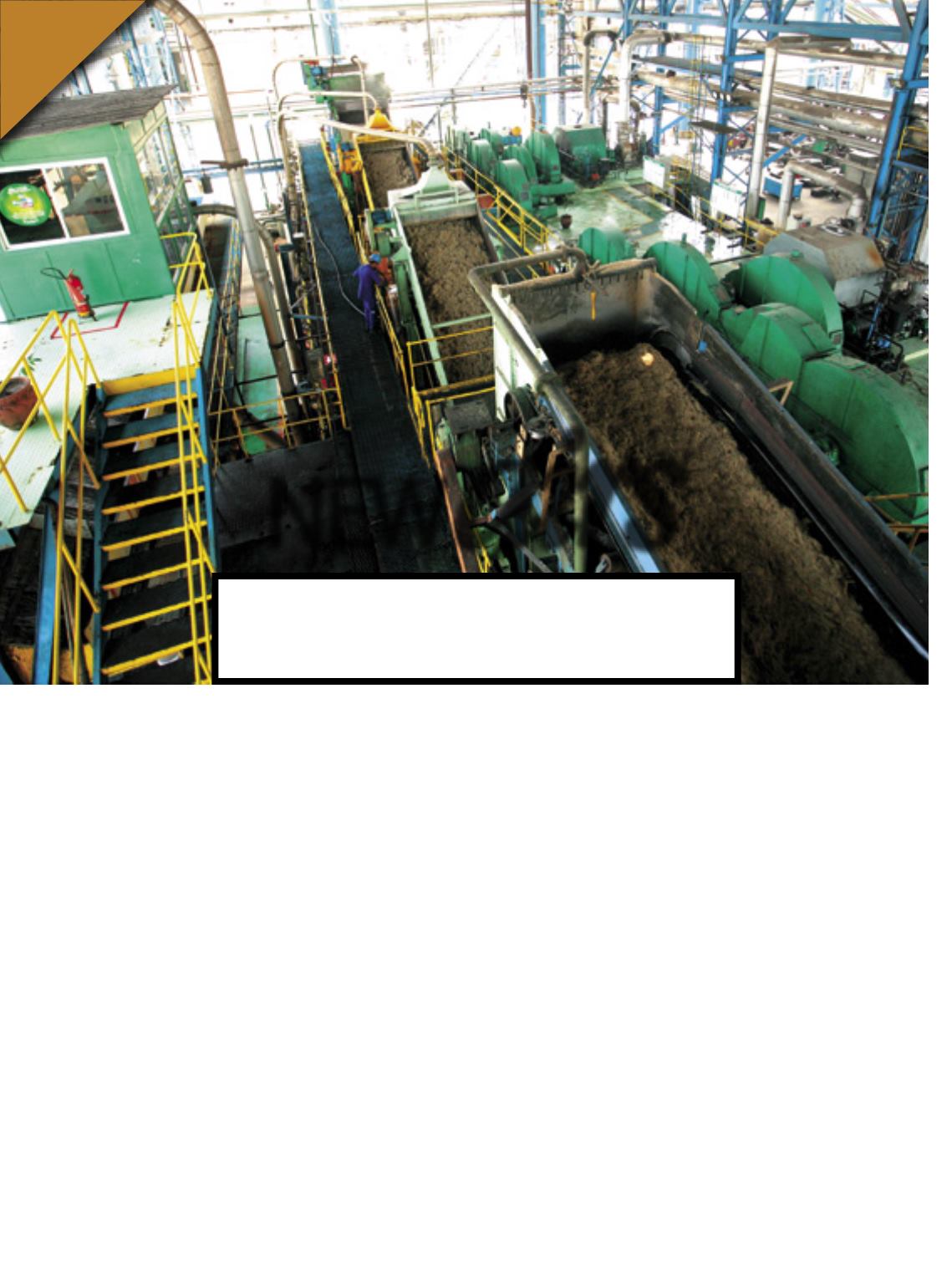
B
y itself, the sugarcane productive
sector is responsible for improv-
ing the air people breathe in Bra-
zil, resulting from clean energy,
while the aspiration is for an as-
surance of new financial airs for maintaining
theactivityandmakingitgrow,andthesame
holds true for thebenefits it generates for the
Country. The 2016/16 crop has led to better
economic results while the expectation for
the near future is for a definition and assur-
ance of clear and fixed directives intended to
encouragenewinvestments,whereanewof-
ficial program now in the making, known as
RenovaBio, representshope.
The supply chain is a major income gen-
erator in Brazilian agribusiness, and is esti-
mated to exceedR$ 110 billion. However, the
segment has been through difficulties and
debtproblems.Inthepastseason,withmore
favorable prices, especially for sugar, profit-
abilitywas againpossible, as observed in the
industrial andproductionarea. In the latter, a
survey by the Brazilian Confederation of Ag-
riculture and Livestock (CNA) of 40 regions in
six Center-South sugarcane producing states
detectedpositivenetmargins, ingeneral.
“Considering the value of 0.6839 of the
SãoPauloStateCouncil of Sugarcane, Sugar
and Ethanol Producers (Consecana-SP) as a
referenceforthepricesoftherawmaterialin
the 2016/17 growing season, it is observed
that almost all the sampled regions showed
positive profitability rates in sugarcane pro-
duction”, according to a survey conducted
by CNA’s Future Field Project, in a partner-
ship with the Continued Education in Com-
pany Economy and Management (Pecege),
of the Center for Applied Studies on Ad-
vanced Economics (Cepea), linked with the
Luiz de Queiroz College of Agriculture (Es-
alq),oftheUniversityofSãoPaulo(USP).To-
tal operational costs, according to the study,
remained at 0.50 to 0.60 R$/Kg/ATR.
The industry, likewise, ascertains favor-
able results in the season, as an entity of the
sector (Unica) attests to it in this Yearbook,
besides stressing the high generation of rev-
enue, around US$ 11.3 billion in exports of
sugar and ethanol in 2016, ranking the sec-
tor as third in national agribusiness. In its
evaluation, the improvement should lead to
ahigher level of field renewal andenhanced
cultural practices, fleet and equipment, but
there are still uncertainties as to guarantees
for newand bigger investments.
Those who have been working for years
in the sugar and energy area have also been
fighting for a defined regulatory framework
that allows for safe planning and sustain-
able growth. Towards this end, there is an
opportunity on the way with the Renova-
Bio Program launched by the government
on the heels of the recent Conference of the
Parties (COP21) on climate change, with the
purpose to reduce greenhouse gas emis-
sions. The sector hopes that its concrete for-
mat will meet its yearning and, in fact, be an
assurance of new times, with even higher
gains for the environment fromethanol and
more investments, income, dividends and
much needed jobs in the Country.
n
Improvement in the past crop
andanewprogramcouldleadtheBraziliansugarcane
segmenttogaintractionforitsrecovery
New
airs
Sílvio Ávila
10


